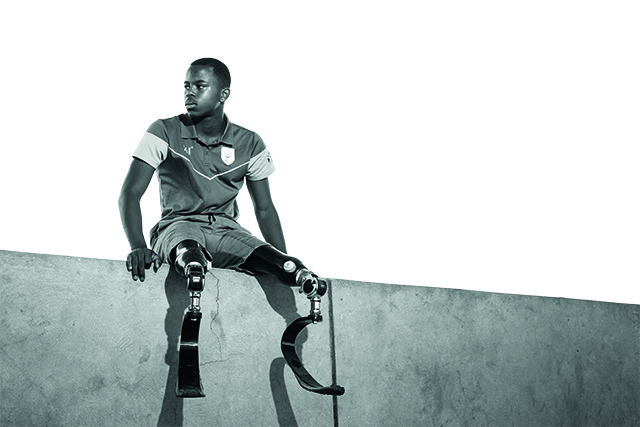The 10 Most Influential People In SA Running
Some are winners, some make winners… but all have had a profound effect on the state of SA running in 2016.
4. The Prodigy – Ntando Mahlangu Won silver in the men’s T42 200-metre final at the 2016 Paralympics, 14

In exactly 23.77 seconds, blade runner Ntando Mahlangu achieved big things. Even more impressive was his lightning-fast rise to the Paralympic podium – because four years ago, Ntando Mahlangu was in a wheelchair. He was born with hemimelia, which meant the lower part of his legs didn’t develop properly.
As a child from a disadvantaged background, living with a disability, he belonged to arguably one of the most marginalised groups in the country. Yet Mahlangu dreamed of becoming one of the fastest men in the world – and then he actually did it.
Which means not only that his athletic ability is outstanding, but that his self-belief and determination are bulletproof too.
Mahlangu could easily have stayed in the confines of his wheelchair, but when he was 10 years old, he decided that to be able to walk, he would have the lower part of his legs amputated through the knee.
His supporters, too, can be considered heroes. In 2012, Jumping Kids – a non-profit organisation that makes prosthetic limbs for children – gave Mahlangu his first pair of blades.
Mahlangu recalled: “For the first time, I could walk. I vomited – not out of fear, but out of happiness.”
His mom and grandmother told him he could do anything, and he affectionately describes his coach as a ‘pushy tannie’ who offers him no sympathy at training sessions. Because these people believed in him and gave him opportunities, he had no reason to think he couldn’t succeed.
It took Mahlangu just one week to learn to walk, and after two weeks, he was able to run. Soon he was competing in national competitions, and in the past two years he has become the African record-holder in the 100, 200, 400 and 800 metres. He is the world-record holder in the 400m in the T42 class. He has run even faster than that record, but in an able-bodied event, so his time is considered unofficial.

“I believe his self-confidence stems from knowing what he has already accomplished, and building on it,” explains Jumping Kids operations manager Michael Stevens. “He knows he can run fast, so now when he races he doesn’t worry about the competition – just about his own performance.”
Because he doesn’t have knees or ankles, Mahlangu uses his hips to run. They pivot in an inward, circular motion.
“At the start of a race, he doesn’t have the initial thrust that he would if he had knees, but once he gets up to speed, because he’s using bigger muscles, he accelerates,” explains Stevens. “That’s especially advantageous in the 400 metres. I believe Ntando can get his time down to the 45-second mark – it would be unreal if he could get his time closer to Wayde van Niekerk’s record, all things considered.”
The able-bodied athletes Mahlangu runs with don’t see him as a boy with no legs – they recognise him as a runner, striving to achieve the same goals they are.
Now that the Paralympics is over, life returns to normal: Mahlangu plays soccer with his friends, spends time with his family, tucks into a lasagne and enjoys DJ’ing. School is important to him, because he aspires to become an engineer.
But when it comes to athletics, he’s a prodigy – and an inspiring example of what is possible for children living with disability.
READ MORE ON: cape-town-marathon Caroline Wöstmann inspiring people motivation wayde van niekerk



